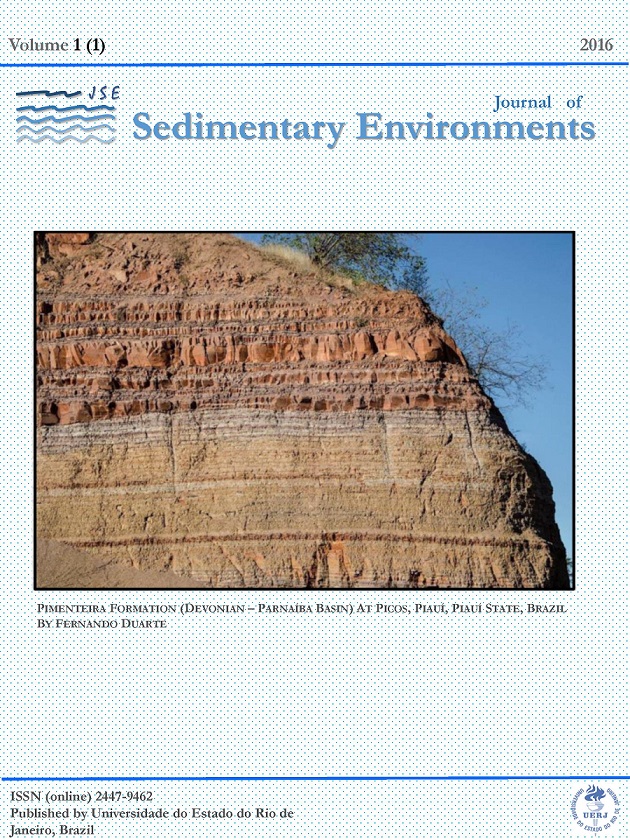BIOTIC (FORAMINIFERA AND THECAMOEBIANS) AND ABIOTIC PARAMETERS AS PROXIES FOR IDENTIFICATION OF THE ENVIRONMENTAL HETEROGENEITY IN CAETÉ RIVER ESTUARY, AMAZON COAST, BRAZIL
DOI:
https://doi.org/10.12957/jse.2016.21264Keywords:
Microfauna, Microtidal estuary, Sedimentology, Coastal dynamicsAbstract
Foraminifera and thecamoebians assemblages were analyzed at Caeté River Estuary in order to identify saline gradients and intensity of human impacts. In the study area, 29 species of foraminifera typically from intertidal environments and 11 species of thecamoebians were identified. The microfaunal assemblages were characterized by low diversity, averaging 1.9 at the mouth and 0.5 near Bragança City. These values are common in transitional coastal environments along de Brazilian Coast. Statistical analysis, based on the relative abundance of species, did not reveal the presence of an estuarine gradient, which was corroborated by the physical and chemical parameters measured in the field. An increasing of sedimentary fine fraction and organic matter occurs in the intermediate region of the estuary, indicating attenuation of the stream influence. The calcareous foraminifera species were associated with high salinity, temperature and pH values. The agglutinated species were associated with muddy sediment, total organic matter and lower salinity. Four environmental compartments were identified based on biotic and abiotic analysis, but they do not represent the classic estuarine gradient, instead, they represent the differences in the freshwater supply and mangrove distance.
doi: 10.12957/jse.2016.21264
Downloads
Published
Issue
Section
License

Journal of Sedimentary Environments (JSE) is licensed under a Creative Commons Attribution-Noncommercial-Share Alike 4.0 International License.

